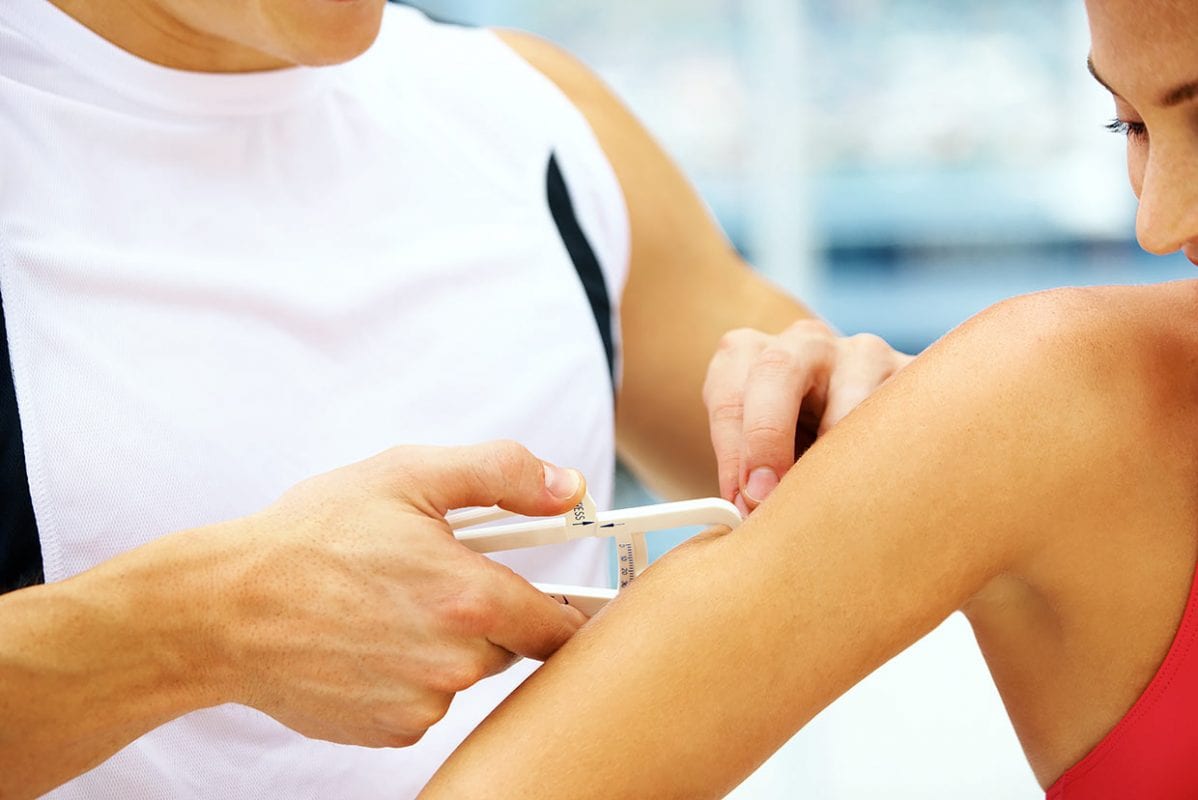Have you ever had your BMI (Body Mass Index) ever had your body fat tested? If you’re like me, it’s a confusing process, and can often be misleading if not properly measured. For me, I’m 6’0 and weigh 195lb. My body fat measurement comes in at 13% which is good for my age but my BMI comes in at 26.4 which tells me I’m overweight. I’m athletic and workout 5 times a week and am active on the days I’m not training.
For a lot of people, the scale is the enemy and they don’t look forward to stepping on it. Like a BMI measurement, it can also be very misleading. Since fat weighs less than muscle, people starting a workout program may loose a few pounds initially as they lose fat but then notice that their weight levels off or they even gain a few pound at the end of the first month setting them back mentally as they’ve lost fat but gained muscle resulting in the weight gain.
Body fat testing is the most accurate method of determining your overall body composition and there are a variety of different methods of doing it (some more accurate than others). Skin fold measurement, hydrostatic weighing and bioelectrical impedence are the most widely used and accepted methods of body fat testing. Each however has their own pros and cons.
Skinfold Testing: To do this, a skinfold caliper is used to pinch different areas of the body and the thickness of fat is measured. These numbers are added together and compared to the measurements on a chart to give a body fat percentage. Results are very precise and much less expensive than some of the other methods we’ll discuss. The experience of the professional taking the measurements and the precise location where the measurements are taken can vary the results resulting in marginal error in the calculation.
Hydrostatic Weighing: This method as been shown by research to be the most accurate method of body fat assessment. You sit in a chair that is submerged completely underwater and your body mass is weighed. You hold your breath for 5 seconds while the measurement is being taken. This number is then compared to your dry land scale measurement resulting in a body fat measurement. This is a more expensive process and must be done by a qualified technician with the proper equipment. It also takes about an hour resulting in a higher cost for the procedure.
Bioelectrical Impedance: In this method, you stand on what looks a lot like a bathroom scale that has two steel plates for you to stand on. A small electrical charge is passed through your body and the speed of transmission is measured. The greater your body fat, the slower the charge will travel. The reading is done quickly (less than 10 seconds) and you can learn a lot from the measurement including body fat composition and amount of lean muscle. The main issue with this method is that it often overestimates the lean muscle and underestimates the body fat when compared to other methods.
Having your body fat tested is a good way for you to begin a training program. It will allow you to see the results of your training better than simply stepping on a scale or taking the BMI reading which can be quite unreliable, and misleading.








